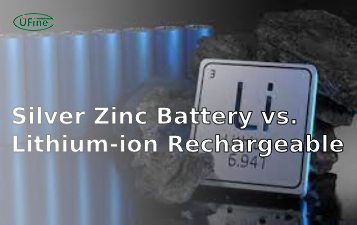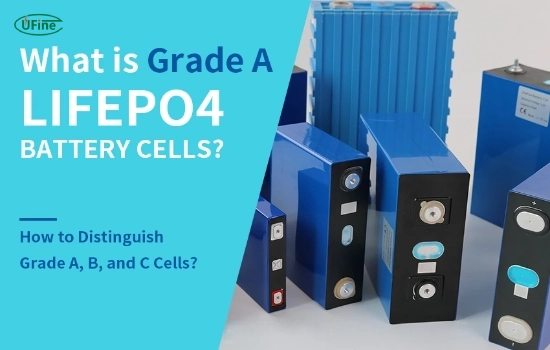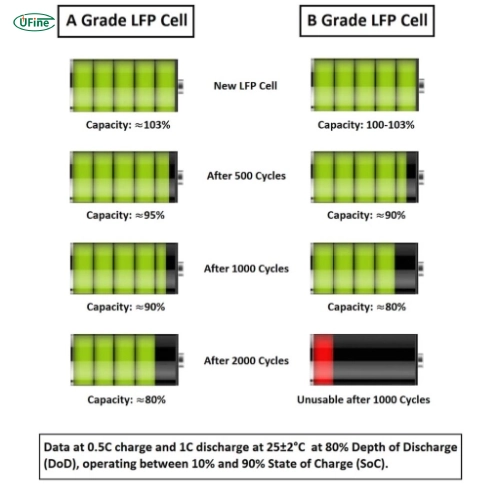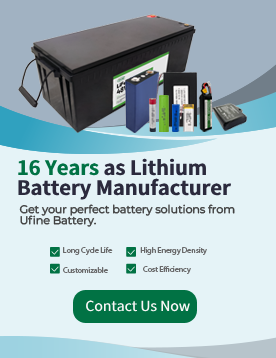
- Part 1. What are LiFePO4 cells?
- Part 2. Quick overview: LiFePO4 cell grades (A vs B vs C)
- Part 3. Grade A LiFePO4 cells: Top features and benefits
- Part 4. Grade B LiFePO4 cells: Top features and benefits
- Part 5. Grade C LiFePO4 cells: Top features and benefits
- Part 6. How can You tell if a LiFePO4 cell is grade A, B, or C?
- Part 7. Applications for different grades of LiFePO4 cells
- Part 8. How to source high-quality LiFePO4 cells?
- Part 9. Common misconceptions about LiFePO4 cell grades
- Part 10. FAQs about LiFePO4 cell grades
Lithium Iron Phosphate (LiFePO4) batteries have become increasingly popular due to their stability, safety, and longevity. However, not all LiFePO4 cells are created equal. Typically, people classify them into three grades: Grade A, Grade B, and Grade C. Understanding the differences between these grades is crucial when selecting the suitable cells for your application. In this comprehensive guide, we will delve into the nuances of each grade, helping you make an informed decision.
Part 1. What are LiFePO4 cells?
LiFePO4 cells, also known as lithium iron phosphate batteries, are becoming increasingly popular in various applications due to their high safety standards, long life, and stable performance. These cells are typically classified into three grades—Grade A, B, and C—each with its unique characteristics. Understanding the differences between these LiFePO4 cells is crucial to choosing the right one for your needs.
Why is Grading Important?
The grading of LiFePO4 cells is essential because it directly impacts the battery’s performance, safety, and lifespan. Using the wrong grade can lead to suboptimal performance, reduced efficiency, and even safety hazards. Therefore, understanding the grades and their differences is vital for investing in LiFePO4 batteries.
Part 2. Quick overview: LiFePO4 cell grades (A vs B vs C)
LiFePO4 cells are categorized into three grades. Here is a quick comparison:
| Grade | Key Features | Best Use |
|---|---|---|
| Grade A LiFePO4 Cells | Highest quality, consistent capacity, low resistance, long cycle life | Electric vehicles, solar storage, medical devices |
| Grade B LiFePO4 Cells | Good but less consistent, moderate resistance, shorter lifespan | Backup power, e-bikes, consumer electronics |
| Grade C LiFePO4 Cells | Lowest performance, high variability, shorter cycle life | Toys, testing, low-cost gadgets |
This quick breakdown helps you understand the difference between Grade A, Grade B, and Grade C LiFePO4 cells before diving deeper into their details.
Part 3. Grade A LiFePO4 cells: Top features and benefits
Grade A LiFePO4 cells are the highest quality available. Here are some key characteristics:
1. Superior Performance
Grade A cells offer the best energy density, discharge rates, and efficiency. They are manufactured with the highest quality control standards, ensuring minimal internal resistance and maximum capacity.
2. Longevity
These cells can endure thousands of charge and discharge cycles without significant degradation. This makes them ideal for applications where longevity is crucial, such as in electric vehicles and stationary energy storage systems.
3. Consistency
Grade A cells provide consistent performance across the board. Each cell in a batch will have nearly identical specifications, which is crucial for applications requiring uniformity.
4. Safety
Grade A cells are manufactured to the highest standards and undergo rigorous testing to meet safety regulations. This makes them less prone to overheating, swelling, or leaking.
Part 4. Grade B LiFePO4 cells: Top features and benefits
Grade B cells are a step down from Grade A but perform well. Here are their main characteristics:
1. Good Performance
While not stellar as Grade A cells, Grade B cells still perform well. They have higher internal resistance and slightly lower capacity but are still reliable for many applications.
2. Moderate Longevity
Grade B cells have a shorter lifespan compared to Grade A cells. They can endure many cycles, but their performance will degrade faster.
3. Slight Variability
There is more variability in the performance of Grade B cells. This means that only some cells in a batch will have the exact specifications, which could concern some applications.
4. Adequate Safety
These cells meet safety standards, but manufacturers do not subject them to the same rigorous testing as Grade A cells. They are still safe to use but may be more prone to minor issues.
Part 5. Grade C LiFePO4 cells: Top features and benefits
Users typically use Grade C cells in less critical applications because they are the lowest quality. Here are their characteristics:
1. Lower Performance
Grade C cells have the highest internal resistance and the lowest capacity. They are not suitable for high-performance applications and may not deliver consistent results.
2. Shorter Longevity
These cells have the shortest lifespan, with significant degradation occurring after fewer charge and discharge cycles than Grade A and B cells.
3. High Variability
There is considerable variability in the performance of Grade C cells. This inconsistency can be problematic for applications requiring uniformity and reliability.
4. Basic Safety
Manufacturers subject Grade C cells to basic safety standards but do not conduct extensive testing. They are more likely to encounter issues such as overheating or swelling.
Part 6. How can You tell if a LiFePO4 cell is grade A, B, or C?
If you are wondering how can you tell if a cell is graded, here are the most reliable steps to identify whether it is a Grade A lithium battery cell, Grade B LiFePO4 cell, or Grade C:
- Check Manufacturer Reputation: Grade A LiFePO4 cells usually come from top manufacturers with strict quality control.
- Verify Test Reports: Ask for performance data (capacity, internal resistance, cycle life) to confirm the grade.
- Look for Certifications: Grade A battery cells often carry UL, CE, or ISO certifications.
- Compare Specifications: Grade A cells have higher consistency, while Grade B and C show more variability.
- Evaluate Price: Grade A LiFePO4 cells cost more due to superior quality; unusually cheap prices often indicate Grade B or C.
Part 7. Applications for different grades of LiFePO4 cells
Each grade of LiFePO4 cells is suitable for different applications. Understanding where each grade fits best can help you make an informed decision.
1. Grade A Applications
Grade A cells are ideal for high-performance and critical applications such as:
- Electric Vehicles: Where long cycle life and high efficiency are crucial.
- Solar Energy Storage: Where reliability and longevity are essential.
- Medical Devices: Where consistent performance and safety are paramount.
2. Grade B Applications
Grade B cells are suitable for less critical but still essential applications like:
- Consumer Electronics: Where moderate performance and longevity are sufficient.
- Backup Power Systems: Where occasional use does not warrant the highest grade.
- Electric Bikes and Scooters: Where good performance is needed but at a lower level.
3. Grade C Applications
Grade C cells are best for non-critical and low-performance applications such as:
- Toys and Gadgets: Where performance and longevity are not significant concerns.
- Low-end Consumer Electronics: Where cost is a significant factor.
- Prototyping and Testing: Where high quality is not necessary.
Part 8. How to source high-quality LiFePO4 cells?
Sourcing high-quality LiFePO4 cells involves several steps:
1. Research Manufacturers
Start by researching reputable manufacturers known for producing high-quality cells. Look for companies with a proven track record and positive reviews.
2. Verify Specifications
Ensure the specifications provided by the manufacturer match the grade you are seeking. Request detailed test results to verify performance.
3. Check Certifications
Look for certifications such as ISO, CE, and UL, which indicate that the cells meet international quality and safety standards.
4. Request Samples
Request samples to test the cells yourself. This can provide firsthand insight into their performance and quality.
5. Evaluate Supplier Transparency
A reliable supplier will be transparent about their products and willing to provide the necessary documentation to verify the grade of their cells.
Part 9. Common misconceptions about LiFePO4 cell grades
There are several misconceptions about LiFePO4 cell grades that can lead to confusion:
1. All Cells Are the Same
This is a common misconception. The grade of a cell significantly impacts its performance, longevity, and safety.
2. Higher Price Always Means Higher Quality
While price is an indicator, it is not the only factor. Always verify specifications and test results rather than relying solely on price.
3. Grade B and C Cells Are Useless
While they are not suitable for high-performance applications, Grade B and C cells still have their uses in less critical applications.
Artikel Terkait: What is LiFePO4 Battery Life?
Part 10. FAQs about LiFePO4 cell grades
What is a Grade A LiFePO4 cell?
A Grade A lithium battery cell is a high-quality LiFePO4 cell with strict quality control, consistent performance, and a long cycle life. These are the most reliable cells for EVs and solar storage.
What are Grade B LiFePO4 cells used for?
Grade B LiFePO4 cells are slightly lower in quality than Grade A, but still safe and reliable. They are commonly used in backup power systems, e-bikes, and mid-range electronics.
Are Grade C LiFePO4 cells safe?
Grade C LiFePO4 cells meet only basic safety standards. They are not recommended for critical systems but may be used in toys, gadgets, or prototyping where performance is less important.
Grade A vs Grade B LiFePO4 cells: Which should I choose?
Choose Grade A LiFePO4 cells if you need maximum safety, long cycle life, and consistent performance. Opt for Grade B cells if budget is limited and the application is less critical.
Related Tags:
More Articles

What is the Difference Between Silver Zinc Battery vs. Lithium-ion Rechargeable?
Compare silver zinc and lithium-ion rechargeable batteries: energy density, cycle life, safety, cost, and uses in drones, medical devices, EVs, and electronics.
What are Watts and Watt Hours in Battery?
Understand watt vs watt-hour in batteries: key differences, how to calculate capacity, and why they matter. Includes free comparison table.
Best 10 Blood Pressure Monitor Battery Review: Finding the Most Reliable
Are you looking for a reliable Blood Pressure Monitor battery? Here is a complete guide with the top 10 best blood pressure monitor batteries.
Bluetooth Headphone Battery Guide: All You Need to Know
Maximize headphone battery life with expert tips! Learn how to charge, check, troubleshoot, and choose the best bluetooth headphone battery in 2025.
LiFePO4 Battery VS. Lithium-ion Polymer Battery: Which One Is Best?
Comprehensive comparison of LiFePO4 vs Lithium Ion Polymer batteries: energy density, safety, lifespan, cost. Find out which battery suits your needs in 2025.




